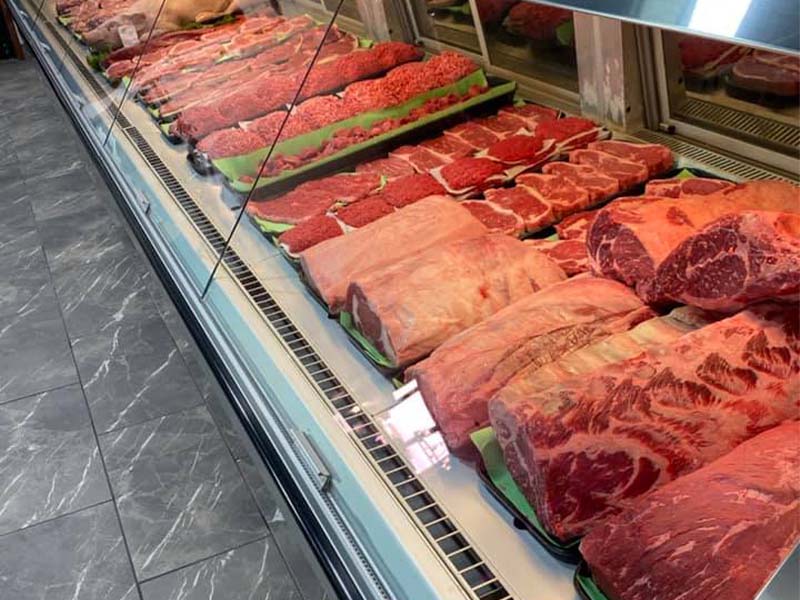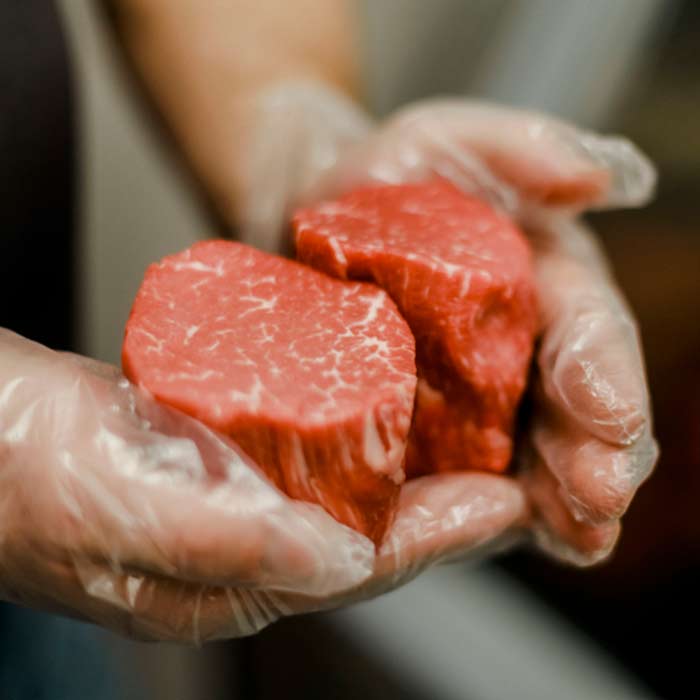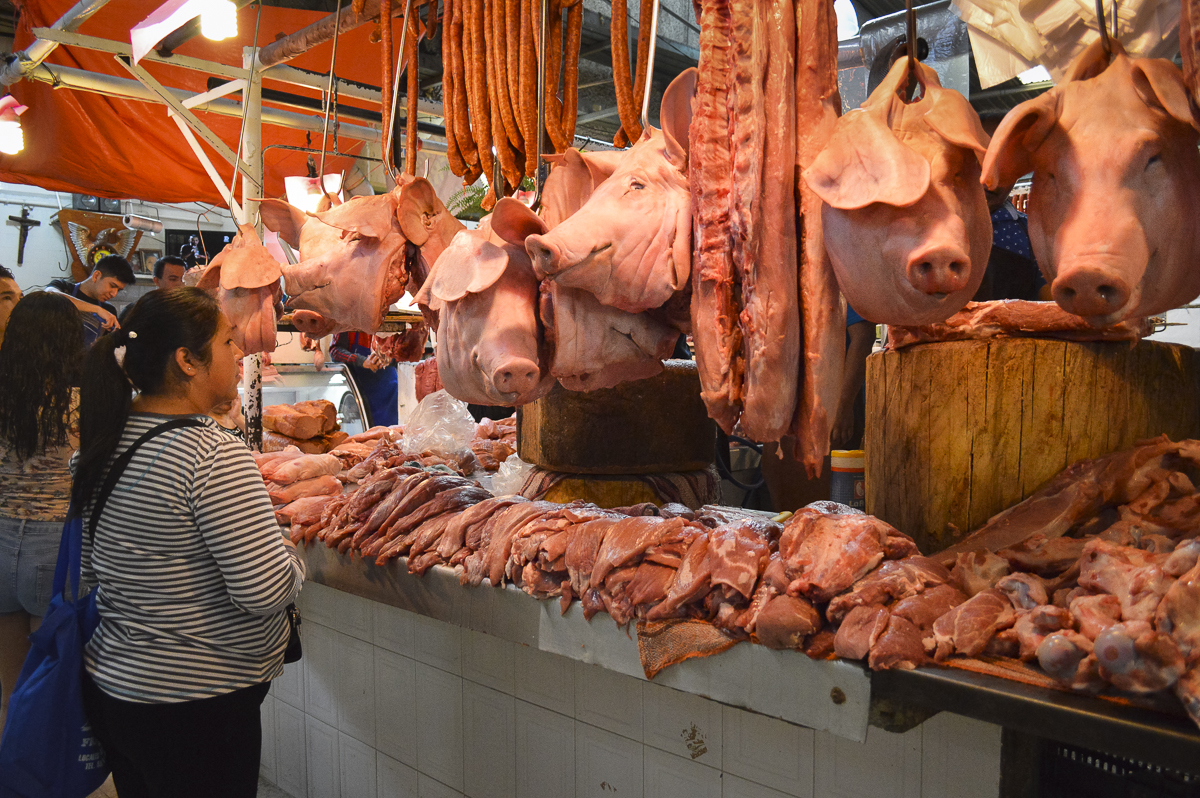Bagley Farms Meat Market Edwardsville IL: Your Best Location for Neighborhood Meat Option
Bagley Farms Meat Market Edwardsville IL: Your Best Location for Neighborhood Meat Option
Blog Article
Discover the Art of the Butcher's Cut in a Modern Meat Market
In the ever-evolving landscape of modern-day meat markets, the butcher's cut has actually transcended its typical origins, merging age-old craftsmanship with contemporary practices. What truly establishes the modern butcher apart is their capacity to forge a deeper connection between consumers and the origins of their meat.
Evolution of Butchery Techniques

The mid-20th century saw butchery methods even more refined by clinical understandings into muscle biology and meat aging, enhancing both inflammation and preference. Developments like vacuum product packaging and refrigeration prolonged item shelf-life, allowing butchers to diversify offerings and boost top quality control. This duration also noted the surge of customized tools, such as band saws and meat slicers, which raised accuracy and effectiveness in meat processing.
Digital systems now help in monitoring animal provenance and maximizing cuts to meet details client choices. Additionally, a renewal in artisanal butchery has emerged, mixing traditional skills with modern-day knowledge to cater to customers looking for ethical and lasting meat options.

Understanding Meat Cuts

Understanding the details of meat cuts is necessary for both butchers and consumers looking for high quality and value. For butchers, exact cuts reflect ability and respect for the craft, making certain very little waste and optimal return.
The key classifications of meat cuts consist of primitive, sub-primal, and retail cuts. Butchers then break these down further into sub-primal cuts, prior to finally creating retail cuts readily available to consumers, like ribeye or tenderloin.
Comprehending muscular tissue composition is critical; muscles utilized extra frequently by the animal often tend to be harder and are best suited for sluggish food preparation approaches, while less-used muscles, like those discovered in the loin, are a lot more tender and perfect for grilling or roasting. Familiarity with these distinctions encourages customers to make informed options, improving their cooking undertakings.
Choosing Top Quality Meat
Picking the best meat involves even more than just picking an aesthetically appealing next item from the display screen. The art of selecting top quality meat needs a discerning eye and expertise of particular attributes that indicate freshness and quality.
Secondly, consider the marbling, which describes the white flecks of fat within the muscle mass. Proper marbling is a vital indicator of inflammation and flavor, as it thaws during food preparation, enhancing the meat's juiciness. Bear in mind, higher marbling often associates with premium high quality cuts, such as USDA Prime.
Texture is one more crucial variable; meat ought to really feel firm to the touch, not slimy or extremely soft. Furthermore, bear in mind the fragrance. Fresh meat needs to have a clean, neutral scent, try this site without any sour or repulsive odors.
Combining Cuts With Food Preparation Methods
Efficiently pairing cuts of meat with the ideal cooking techniques is necessary for accomplishing optimal flavor and appearance. These techniques improve the meat's all-natural flavors and make certain a juicy surface.
Conversely, harder cuts like brisket and chuck roast are rich in collagen, which breaks down into gelatin when cooked slowly. These cuts are perfect for braising or sluggish roasting, enabling the meat to soften gradually and create deep, complex flavors. Similarly, cuts such as short ribs and pork shoulder get on well with slow-cooking methods, where expanded cooking times change their durable structures right into succulent recipes.
Lamb shanks and oxtail, which require long term food preparation to tenderize, are excellent candidates for stewing or slow simmering. These methods coax out abundant, hearty tastes while keeping dampness. By comprehending the unique attributes of each cut, cooks and home cooks alike can raise their culinary creations, guaranteeing each recipe is both pleasing and unforgettable.
The Butcher's Duty Today
Navigating the evolving landscape of the modern-day meat market, the butcher's role today extends beyond mere prep work of cuts. Contemporary butchers are cooking artisans, educators, and supporters for lasting methods. They link the void in between the farm and the fork by making certain moral sourcing, comprehending pet husbandry, and focusing on transparency in the supply chain. This change shows the expanding customer demand for quality over quantity, where provenance and pet welfare are critical. more helpful hints
Along with crafting accurate cuts, butchers now engage directly with consumers, supplying cooking advice and tailoring selections to match individual demands and preferences. Their experience in meat aging, marbling, and taste profiles encourages customers to make enlightened decisions, improving their cooking experiences. This tailored solution exemplifies the butcher's advancing role as a relied on expert in the kitchen.
Additionally, butchers are pivotal in decreasing waste, making use of entire pets to produce diverse products such as sausages and stocks - bagley farms meat market edwardsville il. This comprehensive approach not just values the animal but likewise lines up with modern sustainability goals. By doing this, the contemporary butcher personifies both tradition and technology, adapting to an ever-changing market while protecting the virtuosity and stability of their craft

Final Thought
Mastery in recognizing varied meat cuts and high quality indications equips butchers to give enlightened recommendations, straightening certain cuts with optimal food preparation techniques. By recognizing historical techniques while welcoming modern demands, the butcher's role remains important in today's innovative meat market.
Report this page